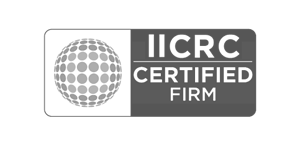Did you know that fire departments in the United States respond to a fire every 24 seconds? This alarming statistic highlights the prevalence of fire incidents and the urgent need for effective fire damage recovery strategies. When a building is damaged by fire, the restoration process becomes crucial in bringing it back to its pre-fire condition.
Key Takeaways:
- Fire incidents occur frequently in the United States, emphasizing the importance of fire damage recovery.
- The restoration process is essential in restoring a building to its original condition after fire damage.
- Expertise, careful planning, and effective execution are necessary for successful fire damage recovery.
- Building restoration after a fire involves several essential steps, including structural repairs and cleaning.
- Smoke residue and odors can be challenging to remove but must be addressed for a comprehensive restoration.
The Prevalence of Fire Damage and the Scope of Recovery Efforts
Fire incidents are unfortunately common in the United States, with fire departments responding to a fire every 24 seconds. These incidents result in significant fire damage to buildings across the country. To understand the scope of recovery efforts needed after a fire, it is important to consider the prevalence of fire damage and the statistics surrounding these incidents.
According to recent fire damage statistics, there were approximately 1.3 million fire incidents reported in the United States in 2020 alone. These incidents resulted in an estimated $14.8 billion in direct property damage. The average cost of fire damage per incident was around $11,000.
Notably, residential fires accounted for approximately 3 out of 5 reported fire incidents, with cooking-related incidents being the leading cause. Other common causes of fires include electrical malfunctions, heating equipment, and smoking materials.
When a fire occurs, the damage can be extensive, affecting the structure, contents, and overall safety of a building. The recovery process involves various steps, including assessing the damage, cleaning and restoring the property, and rebuilding any areas that are beyond repair.
Restoring a building after fire damage requires a comprehensive approach, involving the expertise of trained professionals and specialized equipment. As the statistics show, the scope of recovery efforts needed can be significant, highlighting the importance of addressing fire damage promptly and effectively.
To visualize the impact of fire damage and the magnitude of recovery efforts, take a look at the following table:
| Type of Fire Damage | Number of Reported Incidents (2020) | Total Property Damage (in billions) |
|---|---|---|
| Residential Fires | 775,000 | $9.7 |
| Non-Residential Fires | 535,000 | $5.1 |
| Vehicle Fires | 63,000 | $0.03 |
This table provides a snapshot of the different types of fire damage and their associated reported incidents and property damages in 2020.
Understanding the prevalence of fire damage and the scope of recovery efforts emphasizes the importance of fire prevention measures and the need for effective restoration practices. By taking proactive steps to prevent fires and promptly addressing fire damage, individuals and businesses can mitigate the devastating effects and ensure a safe and efficient recovery process.
Understanding Fire Damage Restoration: Expertise, Equipment, and Execution
Fire damage restoration is a complex process that requires specific expertise, specialized equipment, and meticulous execution. The restoration team must possess in-depth knowledge and experience in dealing with the aftermath of a fire to ensure a successful recovery.
Expertise plays a crucial role in fire damage restoration. Professionals trained in this field understand the nature of fire damage, including the various types of damage caused by flames, smoke, and water used to extinguish the fire. Their expertise allows them to assess the extent of the damage accurately and develop a comprehensive restoration plan tailored to each specific situation.
During the restoration process, a variety of advanced equipment is used to effectively mitigate the damage caused by the fire. High-powered fans and dehumidifiers are employed to remove moisture and prevent the growth of mold and mildew. Specialized cleaning agents, such as ozone generators and thermal foggers, are utilized to eliminate smoke residue and odors. The careful selection and utilization of equipment contribute to the thoroughness and effectiveness of the restoration efforts.
| Essential Equipment for Fire Damage Restoration | Key Functions |
|---|---|
| Air movers and dehumidifiers | Remove excess moisture, preventing further damage |
| High-efficiency particulate air (HEPA) vacuums | Remove soot, ash, and other fine particles |
| Ozone generators and thermal foggers | Eliminate smoke residue and odors |
| Hydroxyl generators | Remove volatile organic compounds (VOCs) |
| Structural drying equipment | Facilitate the drying process and prevent further damage |
The execution of the restoration process is a carefully orchestrated endeavor. It involves various steps, including the removal of debris, cleaning and sanitizing affected areas, removing lingering odors, repairing structural damage, and restoring the property to its pre-fire condition. A systematic approach ensures that no aspect of the restoration process is overlooked, resulting in a thorough and successful recovery.
Fire damage restoration is an intricate process that requires the expertise, equipment, and precise execution of experienced professionals. By entrusting the restoration to a reputable and knowledgeable team, property owners can have peace of mind knowing that their building will be restored to its pre-fire state, ensuring a safe and habitable environment once again.
Immediate Actions Post-Fire: Safety and Damage Assessment
After a fire, taking immediate actions is crucial to ensure the safety of individuals and assess the extent of the damage. It is essential to prioritize safety measures to protect oneself and others from potential hazards. Once safety is ensured, conducting a thorough damage assessment is necessary to understand the impact of the fire and develop an effective restoration plan.
First and foremost, it is vital to evacuate the building safely and call emergency services, such as the fire department, to report the incident. Do not attempt to re-enter the premises until it has been deemed safe by professionals. The fire may have weakened the structure, making it unstable and prone to collapsing.
Once the authorities have given the green light, individuals can begin the process of damage assessment. This involves carefully inspecting the affected areas to identify the visible damage and assess its severity. It is essential to document the damage through photographs or videos for insurance purposes and to provide evidence for restoration efforts.
During the damage assessment, pay particular attention to areas that may have been significantly impacted by the fire, such as the structural integrity of the building, electrical systems, plumbing, and HVAC systems. Assess the extent of damage to furniture, belongings, and other valuable items, as this will play a crucial role in determining the restoration plan.
Additionally, it is important to consider the presence of smoke residue and potential water damage caused by firefighting efforts. Smoke residue can permeate surfaces, leading to discoloration, corrosion, and lingering odors. Water damage can result in structural issues, mold growth, and further deterioration of materials. A comprehensive assessment of these factors will help in devising appropriate restoration strategies.
It is advisable to consult with professionals, such as fire damage restoration experts and insurance adjusters, to get a comprehensive evaluation of the damage and guidance on the necessary immediate actions. These experts can provide invaluable insights and recommendations based on their expertise and industry knowledge.
In summary, immediate actions post-fire are crucial for both safety and damage assessment. Prioritize safety measures, including evacuating the premises and seeking professional assistance. Conduct a thorough assessment of the damage, documenting it for insurance purposes. Consider the impact of smoke residue and potential water damage. By taking these immediate actions, individuals can take the first steps towards effective fire damage recovery and restoration.
Prioritizing Steps in the Fire Damage Recovery Process
When it comes to fire damage recovery, prioritizing the necessary steps is crucial for a successful restoration process. By understanding the restoration priorities, individuals can efficiently allocate resources and address the most critical aspects of the recovery. Here, we will discuss how to identify and prioritize the steps involved in restoring a building after a fire.
1. Safety Assessment: The first priority after a fire is ensuring the safety of all individuals involved. It is essential to assess the structural integrity of the building and address any immediate safety hazards. This step often involves collaborating with professionals, such as structural engineers and fire safety experts.
2. Damage Mitigation: Once safety has been established, the next priority is to mitigate further damage. This may involve tarping the roof, boarding up windows, or securing the property to prevent unauthorized access. Taking prompt action can help minimize additional loss and protect the building from external elements.
3. Water Extraction and Drying: Firefighting efforts often leave behind water damage, which can lead to mold growth and further deterioration. Extracting water and drying the affected areas should be a priority to prevent secondary damage and create a suitable environment for subsequent restoration processes.
4. Content Assessment and Restoration: Evaluating and restoring salvageable contents should be prioritized to minimize losses. This involves identifying items that can be cleaned, deodorized, and restored, as well as those that may be beyond repair. Content restoration specialists can assist in this process, ensuring that valued possessions are properly handled.
5. Structural Repairs: Repairing the structural elements of the building is a critical step in the fire damage recovery process. This may involve rebuilding damaged walls, repairing the roof, reinforcing the foundation, or addressing any other structural vulnerabilities. Hiring experienced contractors and structural engineers is essential to ensure the integrity and safety of the building.
6. Cleaning and Deodorization: Removing soot, smoke residue, and odors is paramount to restore the building to its pre-fire condition. Thorough cleaning and deodorization should be conducted, encompassing walls, floors, furniture, and other affected surfaces. Utilizing specialized equipment and cleaning techniques can achieve optimal results.
7. HVAC System Assessment and Cleaning: The HVAC system can harbor smoke particles and odors, posing a risk of recontamination. Prioritizing an assessment and thorough cleaning of the HVAC system will help eliminate lingering smoke residue and maintain indoor air quality.
8. Final Inspection and Certification: Once all restoration work has been completed, a final inspection should be conducted to ensure that the building meets safety and regulatory standards. Obtaining certification of the restoration work may be necessary for insurance purposes and future occupancy.
In summary, understanding the priorities in the fire damage recovery process is essential for a smooth and effective restoration. By following a systematic approach and addressing the most critical steps first, individuals can navigate the recovery process with confidence and restore their building to its pre-fire condition.
How do you restore a building after a fire?
Restoring a building after a fire is a complex process that requires careful planning and execution. It involves several essential steps to ensure the building is structurally safe, clean, and rebuilt to its pre-fire condition. Here is a detailed guide on the necessary actions to take in the building restoration process:
- Structural Repairs: The first step in building restoration after a fire is to assess and repair any structural damage. This includes addressing weakened foundations, damaged walls, floors, and roofs. It is crucial to hire experienced professionals who can identify and address structural issues accurately.
- Cleaning and Debris Removal: After structural repairs, the next step is to thoroughly clean the building. This involves removing debris, soot, and smoke residue from all surfaces. Specialized equipment and cleaning agents are used to ensure a deep and comprehensive cleaning process.
- Restoration of Systems: Fire damage can affect electrical, plumbing, and HVAC systems in the building. These systems need to be inspected, repaired, or replaced to ensure functionality and safety. Again, it is essential to rely on skilled professionals for these tasks.
- Rebuilding and Reconstruction: Once the building has been cleaned and the systems restored, the rebuilding process can begin. This includes replacing damaged walls, floors, ceilings, and other structures. Attention should be given to maintaining the original architectural integrity of the building while incorporating modern safety standards.
Restoring a building after a fire requires a systematic approach and expertise in fire damage repair. By following these necessary steps, you can effectively restore a building to its pre-fire condition, ensuring a safe and functional space for its occupants.
Comprehensive Approach to Removing Smoke Residue and Odors
Smoke residue and odors are common after a fire and can pose significant challenges during the restoration process. The presence of smoke residue not only affects the aesthetic appeal of the building but also contributes to persistent odors. To ensure a comprehensive restoration, effective methods for smoke residue removal and smoke odor elimination must be employed.
Removing smoke residue requires a systematic and thorough approach. This involves:
- Assessing the extent of smoke damage and identifying areas with heavy residue buildup
- Using specialized cleaning techniques and equipment to remove residue from surfaces
- Inspecting and cleaning the HVAC system to eliminate smoke particles trapped within
- Applying appropriate treatments to neutralize and eliminate smoke odors
One highly effective method for smoke residue removal and odor elimination is the use of specialized cleaning agents and techniques. These products are specifically formulated to break down and remove stubborn smoke residue, leaving surfaces clean and odor-free.
Additionally, comprehensive air purification is essential for eliminating smoke odors. This may involve the use of air scrubbers or ozone generators to effectively remove smoke particles and neutralize odors. By addressing both the visible residue and the lingering odors, a comprehensive approach to restoration ensures that the building is not only visually clean but also free from any trace of smoke damage.
It is important to note that smoke residue removal and odor elimination should be carried out by professionals with expertise in fire damage restoration. They have the knowledge and experience to assess the extent of smoke damage and implement the most effective strategies for complete restoration.
Restoring and Reconstructing: The Final Phase in Fire Recovery
After successfully navigating the initial stages of fire damage recovery, restoring and reconstructing the building becomes the final and crucial phase. This phase marks the turning point where the damage is reversed, and the building begins to regain its former functionality and appearance.
Restoration and reconstruction involve a careful and systematic approach to rebuilding the structure and ensuring its safety, while also addressing any aesthetic and functional aspects that were compromised during the fire.
One essential consideration during this phase is to hire licensed and experienced professionals who specialize in fire damage restoration and construction. These experts possess the knowledge, skills, and expertise required to handle the intricacies of reconstructing fire-damaged buildings.
With the guidance of these professionals, the restoration process typically starts with a comprehensive assessment of the structural integrity of the building. This assessment helps identify any areas that require immediate repairs or replacements, such as damaged walls, floors, or roofing.
Once the structural repairs are underway, the reconstruction process begins. This involves rebuilding damaged areas and ensuring that they adhere to safety standards and building codes. It may also involve enhancing the building’s fire protection systems, such as the installation of fire-resistant materials or improving fire escape routes.
In addition to structural repairs and reconstruction, the final phase also includes restoring the building’s functionality and aesthetics. This may involve reinstalling electrical and plumbing systems, repairing or replacing damaged fixtures, and restoring interior finishes such as walls, flooring, and ceilings.
Throughout the restoration and reconstruction process, it is essential to prioritize the safety of both the workers and the future occupants of the building. Adequate safety measures, including protective gear, fire-suppression systems, and proper ventilation, should be in place to prevent any potential hazards.
Furthermore, consistent communication with all involved parties, including contractors, architects, and the building owners, is crucial to ensuring a smooth and successful restoration and reconstruction process.
By approaching the final phase of fire recovery with careful planning, attention to detail, and the expertise of professionals, it is possible to restore a building after a fire and bring it back to its pre-fire state.
Conclusion
In conclusion, the process of restoring a building after a fire is a complex and challenging endeavor. However, with the right expertise, careful planning, and effective execution, it is possible to recover from fire damage and restore a building to its pre-fire condition. By following the steps outlined in this article, individuals can navigate the fire damage recovery process with confidence and ensure a successful restoration.
Firstly, immediate actions post-fire are essential to ensure safety and assess the extent of the damage. It is crucial to prioritize safety and seek professional help to conduct a thorough damage assessment. This will provide a clear understanding of the necessary steps to take in the recovery process.
Next, the process of building restoration after a fire involves structural repairs, extensive cleaning, and rebuilding. Removing smoke residue and odors is also a critical step in the comprehensive restoration. By addressing these aspects meticulously and utilizing effective methods, individuals can achieve a thorough and successful recovery.
Lastly, the final phase of fire recovery involves restoring and reconstructing the building. This phase requires careful consideration of various factors, such as adhering to building codes and regulations, coordinating with contractors, and ensuring proper documentation. By approaching this phase with diligence and attention to detail, individuals can complete the fire damage recovery process and restore their buildings to their pre-fire condition.
FAQ
How common are fire incidents in the United States?
Fire departments respond to a fire every 24 seconds in the United States.
What is the importance of expertise in fire damage restoration?
Fire damage restoration requires specialized knowledge and expertise for effective execution.
What equipment is used in the fire damage restoration process?
The fire damage restoration process utilizes specialized equipment for optimal results.
What immediate actions should be taken after a fire?
After a fire, immediate actions should be taken to ensure safety and assess the extent of the damage.
How can I assess the damage after a fire?
Conduct a thorough damage assessment to understand the extent of the damage caused by the fire.
How do I prioritize steps in the fire damage recovery process?
Identifying priorities is crucial for planning and executing the fire damage recovery process.
What are the necessary steps to restore a building after a fire?
Restoring a building after a fire involves structural repairs, cleaning, and rebuilding.
How can I effectively remove smoke residue and odors?
Comprehensive methods can be used to remove smoke residue and eliminate odors after a fire.
What is the importance of the restoration and reconstruction phase in fire recovery?
Restoring and reconstructing a building is the final phase in the fire recovery process that ensures a successful restoration.






